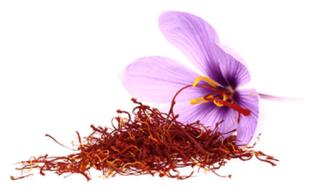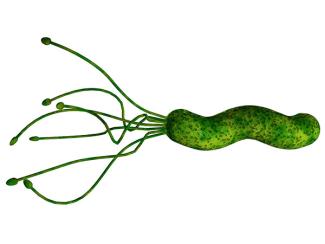
For centuries, the use of plants and herbs in traditional medicine has been an integral part of human history, with countless cultures relying on the natural properties of these remedies for various ailments. Among the numerous health conditions, toothache has been a particularly distressing problem that people have sought to alleviate through natural means. Toothaches, often caused by infections, inflammation, or nerve irritation, can severely impact daily activities and overall well-being. While modern medicine offers quick relief through over-the-counter analgesics, the quest for natural alternatives has never diminished. Several plants are revered for their pain-relieving (analgesic), anti-inflammatory, and antimicrobial properties, which can provide effective toothache relief.
In this article, we will explore some of the most powerful naturally occurring plant remedies traditionally used for toothache relief. We will address the specific properties of these plants, their historical significance, scientific studies that confirm their effectiveness, and practical instructions on how to prepare and use them. By understanding the role these plants play in pain management, we can draw upon a more holistic approach to dental care, incorporating these remedies into modern practices.
Which plant has pain-relieving properties?
Toothaches are often associated with pain that can range from mild to excruciating. Pain-relieving properties, or analgesia, are found in various plants. Two of the most recognized in traditional medicine for their efficacy in soothing toothache pain are Clove (Syzygium aromaticum) and Willow bark (Salix alba).
Clove (Syzygium aromaticum): Clove, especially its essential oil, is widely known for its remarkable pain-relieving properties. The active ingredient in clove oil, eugenol, is an established local anesthetic used in dentistry to alleviate pain caused by toothaches, gum disease, and cavities. Eugenol has been studied extensively, and its analgesic and anti-inflammatory effects are well documented. For example, a study conducted by the University of Damascus (2016) demonstrated that clove oil effectively reduced pain and swelling in patients with chronic pulpitis, a common cause of toothaches .
Another study published in the Journal of Dentistry (2006) compared the analgesic effect of clove oil to benzocaine, a commonly used local anesthetic in dentistry, and found that clove oil had comparable efficacy in pain reduction .
- Willow Bark (Salix alba): Willow bark is another plant with a long history of use for its analgesic properties, primarily due to its active component, salicin, a chemical closely related to aspirin (acetylsalicylic acid). Salicin is metabolized in the body into salicylic acid, which is a powerful pain reliever. Willow bark has been used for centuries to relieve pain and inflammation, and recent studies confirm its efficacy. According to a study published in Phytotherapy Research (2015), willow bark extract demonstrated a significant reduction in pain intensity in patients suffering from musculoskeletal pain .
For toothaches, willow bark can provide relief, particularly when inflammation is involved. Its mild analgesic effect is ideal for those seeking a natural alternative to synthetic painkillers.
Which plant has analgesic properties?
In addition to clove and willow bark, several other plants possess significant analgesic properties and have been used historically for toothache relief.
Peppermint (Mentha piperita): Peppermint is well-known for its soothing and cooling effects, and its essential oil contains menthol, which has natural analgesic properties. Menthol works by desensitizing the nerve endings that cause pain, providing a numbing effect. In a study published in the International Journal of Clinical and Experimental Medicine (2018), researchers found that peppermint oil reduced pain perception in patients with chronic oral pain .
Peppermint oil can be applied directly to the affected area or used as a mouth rinse, providing immediate relief from toothache pain. Its anti-inflammatory and antimicrobial properties also contribute to its effectiveness in treating oral conditions.
Turmeric (Curcuma longa): Turmeric, a staple in Ayurvedic medicine, is another powerful analgesic herb. The active compound in turmeric, curcumin, has been extensively studied for its anti-inflammatory and pain-relieving properties. A study published in the Journal of Clinical and Diagnostic Research (2014) found that curcumin was effective in reducing pain and inflammation in patients suffering from periodontal disease, which is a common cause of toothache .
Curcumin works by inhibiting inflammatory pathways and reducing oxidative stress, providing relief from pain associated with dental conditions.
Which herb has anti-inflammatory properties?
Inflammation is often a major contributing factor to toothaches, especially when gum disease or an infection is involved. Reducing inflammation is crucial for long-term relief, and several herbs are known for their potent anti-inflammatory effects.
Chamomile (Matricaria chamomilla): Chamomile has been used for centuries as a natural remedy for inflammation, pain, and irritation. Its anti-inflammatory properties are primarily due to the presence of flavonoids, such as apigenin, which help reduce swelling and discomfort. A study published in the Journal of Ethnopharmacology (2017) demonstrated that chamomile extract significantly reduced inflammation and pain in patients with oral mucositis, a painful inflammatory condition .
Chamomile can be consumed as a tea or applied topically to the affected area to reduce toothache-related inflammation.
- Calendula (Calendula officinalis): Calendula, also known as marigold, is another herb with impressive anti-inflammatory properties. It contains triterpenoids, which are natural anti-inflammatory compounds that help reduce swelling and promote healing. According to a study published in the Journal of Medicinal Plants Research (2014), calendula extract was shown to reduce inflammation in a variety of inflammatory conditions, including oral inflammation .
Calendula is often used in mouthwashes or topical applications to reduce gum inflammation and soothe the pain associated with toothaches.
Which herb has antimicrobial properties?
Toothaches are often caused by infections, either due to bacteria entering the tooth or from gum disease. Using herbs with antimicrobial properties can help eliminate the underlying infection, preventing the toothache from worsening.
Thyme (Thymus vulgaris): Thyme is a powerful antimicrobial herb, and its essential oil contains thymol, a compound known for its ability to kill bacteria and fungi. In dental care, thyme oil is used in many mouthwashes and toothpaste formulations for its ability to fight off harmful bacteria. A study published in Antimicrobial Agents and Chemotherapy (2016) found that thymol effectively inhibited the growth of oral pathogens, including Streptococcus mutans, the bacteria primarily responsible for tooth decay .
Applying diluted thyme oil directly to the affected area or using it in a mouth rinse can help prevent infection and reduce pain caused by toothache.
Goldenseal (Hydrastis canadensis): Goldenseal is another herb with potent antimicrobial properties. It contains berberine, an alkaloid that has been shown to inhibit the growth of a wide range of bacteria, including those that cause dental infections. A study published in the Journal of Clinical Microbiology (2015) demonstrated that berberine exhibited significant antimicrobial activity against oral pathogens, making it a useful remedy for toothache caused by bacterial infections .
Goldenseal can be used as a mouth rinse or applied directly to the affected area to prevent the spread of infection.
How do we prepare the concoction and use it?
Preparing these natural remedies for toothache relief is relatively simple, and they can be used either individually or in combination for enhanced effects. Below are some common methods of preparation and usage for each plant.
- Clove Oil Application: To use clove oil, dilute it with a carrier oil (such as coconut or olive oil) in a 1:1 ratio to prevent irritation. Apply a small amount of the diluted oil directly to the affected tooth and gums using a cotton ball or swab. Leave it on for 15-20 minutes, and then rinse your mouth with warm water. Repeat as needed throughout the day for pain relief.
- Willow Bark Tea: To prepare willow bark tea, boil 1-2 teaspoons of dried willow bark in a cup of water for 10-15 minutes. Allow it to cool slightly before drinking. The tea can be consumed 2-3 times a day to relieve pain and inflammation. Alternatively, you can use the tea as a mouth rinse.
- Peppermint Oil Mouthwash: Add 3-4 drops of peppermint essential oil to a glass of warm water and use it as a mouthwash. Swish the mixture around your mouth for 1-2 minutes before spitting it out. This can be done several times a day to relieve toothache pain.
- Turmeric Paste: Mix 1 teaspoon of turmeric powder with a small amount of water to create a thick paste. Apply the paste directly to the affected tooth and gums, leaving it on for 10-15 minutes before rinsing with warm water. Turmeric can be used once or twice a day to reduce pain and inflammation.
- Chamomile Tea Compress: Brew a cup of chamomile tea using dried chamomile flowers or tea bags. After allowing the tea to cool, soak a cotton ball or cloth in the tea and apply it to the affected area. Chamomile can also be consumed as a tea to reduce inflammation and promote relaxation.
- Calendula Mouth Rinse: To make a calendula mouth rinse, steep 1-2 teaspoons of dried
calendula flowers in hot water for 10 minutes. Strain the tea and allow it to cool before using it as a mouthwash. Swish the calendula rinse around your mouth for 1-2 minutes to soothe inflammation.
- Thyme Oil Mouthwash: Add 2-3 drops of thyme essential oil to a glass of warm water and use it as a mouthwash. This rinse can be used 2-3 times a day to fight off bacteria and prevent infection.
- Goldenseal Powder Application: Mix a small amount of goldenseal powder with water to create a paste. Apply the paste directly to the affected area, leaving it on for 10-15 minutes before rinsing. Goldenseal can also be used as a mouth rinse by dissolving the powder in warm water.
Using plants and herbs for toothache relief is not only a testament to the wisdom of traditional medicine but also a practical, accessible, and effective approach for those seeking natural alternatives. From pain-relieving properties to anti-inflammatory and antimicrobial effects, these plants offer comprehensive support in managing toothaches caused by various factors. Research supports their use, and incorporating them into a holistic approach to dental care can provide long-term benefits for oral health. With simple preparation methods, these remedies can easily be integrated into daily routines, offering both immediate relief and preventive care.






